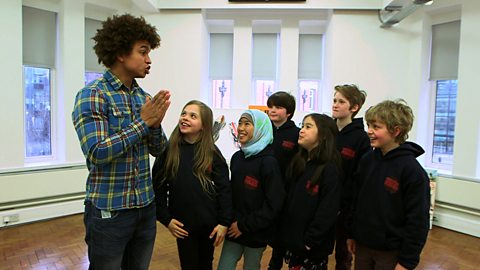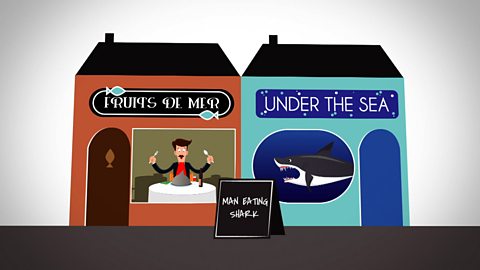Video summary
Radzi and a group of children visit Manchester City Football Club to learn why grammar and punctuation are so important in sports journalism.
They are challenged to identify fronted adverbials in a match report and insert the comma in the correct place.
Radzi explains what a verb, adverb and fronted adverbial are in a very visual way before the task begins.
The second part of the task is to use the apostrophe correctly to show plural possession.
There are a number of very clear examples displayed before this task begins.
Radzi returns to the task to check the contestant’s answers and correct responses are clearly highlighted.
This short film is from the Â鶹Éç series, Punctuation Rules.
Teacher Notes
Pupils could apply their knowledge from this short film and write a sports report for a real school event.
Teachers may also choose to do recount writing after this activity.
Some pupils may benefit from more practice using the apostrophe to show plural possession.
This short film is relevant for teaching English language and literacy at KS2 and KS3 in England, Wales and Northern and 2nd Level in Scotland.
Using punctuation in advertising - brackets, commas and dashes. video
Radzi and a group of children visit an advertising agency to learn about the importance of punctuation in advertisements.

Confusing sentences - using commas and hyphens. video
Radzi and some children visit a shopping arcade, where they look at a series of boards with confusing messages.

Why is punctuation important in news? video
Radzi and a group of children set out to discover why punctuation is important for clarity in the Â鶹Éç newsroom.

Punctuation in story-writing - inverted commas, full stops and question marks. video
Radzi and a group of children visit Manchester Central Library to learn how to identify correct punctuation in a paragraph of a story.

Using punctuation in presentations - colons, semi-colons and bullet points. video
Radzi and a group of children visit a law firm to learn about using punctuation in presentations, finding out about colons, semi-colons and bullet points.
